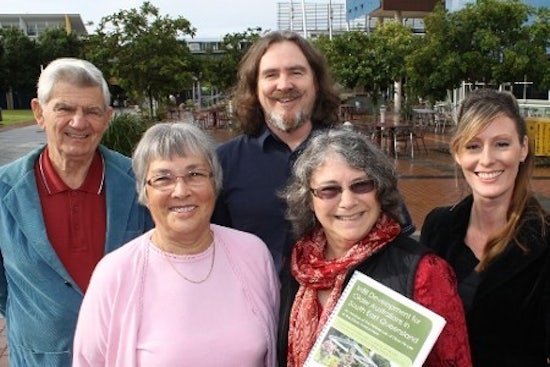Liveable communities for seniors
Innovative residents could live around the corner – just ask Noreen and Jim Weeks who are helping shape the future of residential and community developments suited to older people in the sub-tropics. The Sunshine Coast couple were part of a focus group comprising 24 people aged over 55 years.

Innovative residents could live around the corner – just ask Noreen and Jim Weeks who are helping shape the future of residential and community developments suited to older people in the sub-tropics.
The Sunshine Coast couple were part of a focus group comprising 24 people aged over 55 years living on the Sunshine Coast. Their mission was to design liveable, affordable and sustainable neighbourhoods and accommodation in built environments — where developments need to be incorporated into existing communities.
A research publication Infill Development for Older Australians in South East Queensland was launched in Brisbane last Friday (13 July 2012). The publication will be a guide for town planners, aged care providers, developers and policy makers.
Buderim’s Immanuel Gardens Retirement Village resident Noreen Weeks said the research exposed a “new found” understanding of older people’s needs and preferences for housing and local amenities.
“This research is crucial because some developers don’t understand senior living because it is an era of life they have not discovered yet,” she said.
“There is an importance for developers to talk to people who they want to live in the dwellings they are planning and explain what access there is available to community facilities and transport.”
Ms Weeks explained the internal and external environment should be more compatible with seniors’ needs with greater consideration of the effects of building on an awkward slope, built-up doorways and steps.
Her husband Jim said it was the little things with design which made life easier to live, for example ensuring doors swing outwards rather than in to help people avoid accidents.
“The construction of bathrooms, easy access in terms of pathways and the placement of cooking equipment in the kitchen can all play a part in helping to prevent falls and injuries,” he added.
Pictured is Jim and Noreen Weeks and USC academics Phil Smith, Claudia Baldwin and Caroline Osborne.
The report presented 15 design principles and a suite of housing types suited to infill development opportunities, which included garden houses (two to four studio dwellings with shared kitchen and living areas) and medium density, dual key dwellings suited to having a carer or family member living nearby.
The research was initiated by the University of the Sunshine Coast (USC), with support from Sunshine Coast Council, Urban Land Development Authority and urban designers Deicke Richards.
Co-author of the research publication and University of the Sunshine Coast Senior Lecturer in Regional and Urban Planning, Dr Claudia Baldwin, said cutting-edge insights were unveiled in the research which could set the future agenda of urban development.
“The research project has produced practical, age-friendly housing models based on consultations and design workshops with seniors from the Sunshine Coast and Brisbane,” she said.
“The project used creative research methods such as the participants being shown initial housing preferences and dislikes using their own photographs.”
Dr Baldwin added many people also explained how important sustainability, universal design principles and their neighbourhood was to them and how new developments could enhance a sense of community.
“They really liked having outdoor balconies big enough to use and private space.
“People living in a big city like Brisbane were concerned about safety while people on the Sunshine Coast valued nature and the environment.
“We weren’t looking at the luxury market, nor were we encouraging participants to move. Some of the participants were living in retirement villages and others moved into apartments and were happy with their surroundings.”
USC PhD student and co-author of the report, Caroline Osborne, said a range of stakeholders could help to influence the delivery of more agefriendly neighbourhoods and homes.
“Potential purchasers need to be clear about what they want and start to demand it from the market.
“Developers and the construction industry need to start providing standard design features that improve resident mobility and enjoyment as well as reduce operating costs.
“Government planners and policy makers can identify suitable age-riendly communities and incentives through the development application process such as reduced timeframes, car parking relaxations in areas with good public transport and reduced development application fees.”











![The new Aged Care Act exposure draft is slated for release in December of 2023, but advocates hope to see it rolled out on January 1, 2024. [Source: Shutterstock]](https://agedcareguide-assets.imgix.net/news/articles/wp/agedcareact__0811.jpg?fm=pjpg&w=520&format=auto&q=65)












Comments